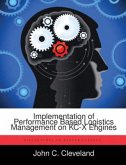The Army has a serious problem with materiel in the supply chain that is moving in the reverse direction. The supply chain is a series of inter-related processes and activities that move supplies and services from the suppliers to the ultimate end users. The reverse supply chain contains items that are either defective, damaged, or otherwise unneeded by the intended user. These items must be returned to the supplier for credit or disposal. The items in the reverse supply chain take longer to identify and process. This delay coupled with a lack of visibility of the items moving backward slows the movement of items into and out of major distribution centers. This delay can have an impact on readiness of combat units and increase the amounts of supplies retained at the unit level. Commercial industry has recognized that managing the items in the reverse supply chain results in better customer service and improved profits. Although the Army is not concerned with profit margins, they are concerned with improving customer service and improving readiness. These concerns lend themselves to the application of reverse supply chain management. After establishing a clear definition of the supply chain and the reverse supply chain, this paper examines the shortfalls in the Army s handling of serviceable excess items in the supply chain and how commercial industry has tackled this problem. The Army has a system in place to track and manage unserviceable major assemblies throughout the maintenance system, but has fallen short in the area of serviceable items. A careful look at commercial practices provides the basis for recommendations on how to improve the Army s reverse supply chain management. The Army is experiencing return rates as high as some Internet retailers. One possible solution to improve the management of these items, as proposed in this paper, is to establish a central returns management center at the Red River Army Depot. This center would be establishedalong the
Hinweis: Dieser Artikel kann nur an eine deutsche Lieferadresse ausgeliefert werden.
Hinweis: Dieser Artikel kann nur an eine deutsche Lieferadresse ausgeliefert werden.








